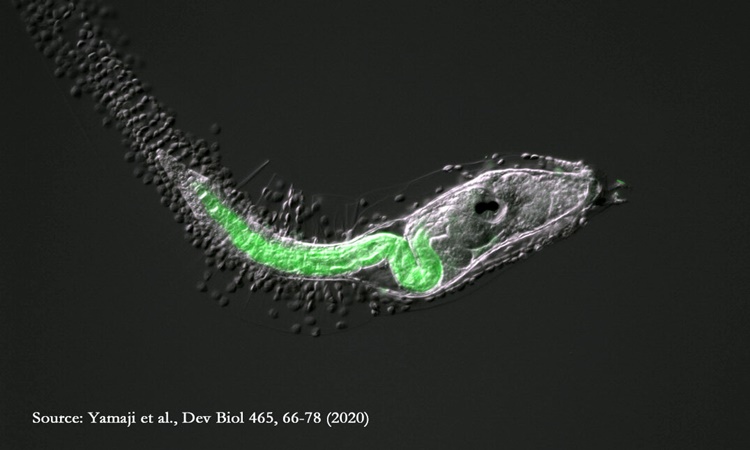Tsukuba [Japan], March 12 (ANI): A team, led by the University of Tsukuba, found that D-serine serves as a chemical signal that allows tissue migration in marine sea squirts when they lose their tails on transforming from tadpoles into their mature form.
The findings offered a broader understanding of the chemical signals that occured during the organism’s transformation and were published in the journal ‘Science Advances’.
Amino acids are the basic building blocks of living organisms and typically occur in a configuration known as L-form. However, there are a few exceptional examples of the structural mirror image of the L-form (known as the D-form) being present in animals.
D-serine is a representative D-form amino acid and has crucial roles in mammals, but its role in non-mammals is unclear. Researchers from Japan recently uncovered a functional role of D-serine in a marine invertebrate, which may provide insight into the evolution of D-amino acid function in organisms.
In mammals, D-serine binds to an ion channel found in neurons called the N-methyl-D-aspartate type glutamate receptor (NMDAR) to regulate the transmission of messages in the brain. D-serine also plays a functional role in mammalian skin tissue. However, its role in non-mammals is less understood something the researchers at the University of Tsukuba aimed to address.
“D-serine has been detected in organisms such as insects, nematodes, and molluscs,” said the lead author of the study, Professor Yasunori Sasakura.
“Its global presence in metazoans is reflective of the conserved presence of a protein that converts L-serine to its D-form, called a serine racemase,” she added.
The team’s previous results implicated a serine racemase in the tail regression of tadpoles of the marine sea squirt Ciona. In this study, they sought to clarify the role of D-serine in this process and found that D-serine is responsible for forming a pocket in the Ciona epidermis that allows the tail to regress into the main body. This pocket was formed by D-serine binding to NMDAR in the epidermis, causing the release of fluid-filled vesicles.
“The results were striking,” explained Professor Sasakura.
“We found that the epidermal vesicle release in Ciona is quite similar to a process occurring in mammalian skin, involving a flux of cations mediated through NMDARs,” she added.
To evaluate what happened when D-serine was absent during Ciona tail regression, the research team created a mutation that omitted the protein responsible for making D-serine from L-serine. Ciona organisms lacking this protein failed to complete tail regression, whereas regular Ciona organisms were able to successfully complete the process.
“Our findings provide insight into how epidermal homeostasis is maintained in animals, contributing toward further evolutionary perspectives of D-amino acid function among metazoans,” concluded Sasakura. (ANI)


